Japanese confectionery is called wagashi (和菓子) (wa = Japanese, [k]ashi = confectionery). Wagashi tends to be sweet, using red beans, a lot of sugar, etc. At the same time, however, like French patisserie, they are extremely delicate, the kind of food that we don’t eat to gain energy or fill our stomachs as much as to please ourselves.
An example is dorayaki, a wagashi made of two “pancakes” (kiji) enclosing sweetened bean paste (called an). Doraemon, as we all know, loves it, as does many Japanese. But some are deterred by the sweetness or texture of the an.
What changed our minds, though, is a new type of dorayaki – strawberry dorayaki – that we discovered in Fukuoka. One day, a member of our team based in Fukuoka saw a slogan of a confectioner in Tenjin, Fukuoka, which reads proudly: “We are the pros of processing strawberries – in that, we are invincible”. The shop’s name is Ito King, which sells an array of strawberry confectioneries, including its strawberry dorayaki series called “dora king”. It uses the Amao strawberries produced in Ito, a city next to Fukuoka, famous for its agriculture.
While we decided to challenge that, unfortunately, we became convinced by the first bite (more about that below), so we decided to write a more detailed investigation of the confectioner.
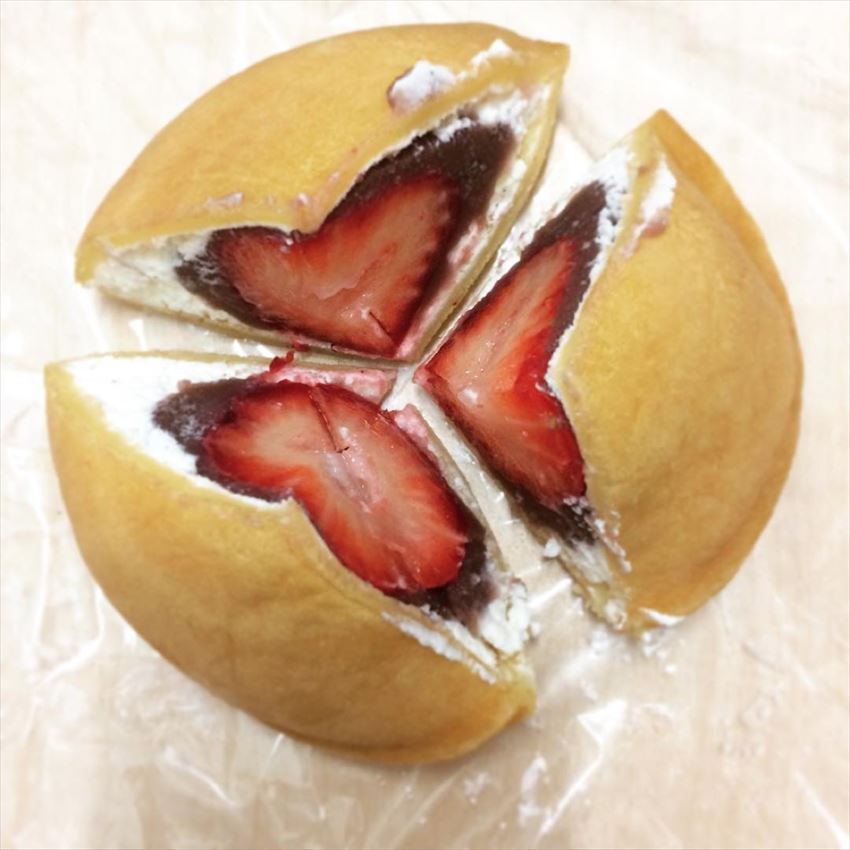
The “Dora King: Cream and Salted Vanilla”
PRODUCTS
Like many modern Japanese confectioners, Ito King sells an array of confections and pastries ranging from more “Japanese” ones (e.g. dorayaki どら焼き, youkan 羊羹, warabi-mochi わらび餅, and arguably castella) or “Western” ones (e.g. jam, pie, rusk and again arguably castella).
The strawberry confections can be grouped in terms of seasonality. Seasonality is of utmost importance to all kinds of confections, or okashi, in Japan. In Ito King’s case, the main ingredient is strawberries. The Amao strawberries usually come in season in spring (April, May), although we have observed that many strawberry products (including that of Ito King) begin to appear on the market as early as winter, so as to attract customers.
Due to this seasonal limit, the dorayakis containing a whole fresh strawberry (in whipped cream, matcha cream and salted vanilla flavors) are only sold from November to end of May. (This year, the last date of sale is 25 May.)
So, let’s return to the first bite that convinced us, and the many layers that it came in. You first bite through the softness of the crepe-like kiji, feel not just the traditional red bean taste but the the rich heaviness of the whipped cream surrounding it, before ultimately, knowingly yet still surprisingly, tear through the fresh, juicy, slightly sour and above all unmistakably sweet strawberry embedded inside. Everything is sweet, like you would expect, yet will not make you wrink, but fill you with joy, even gratitude. It may be an exaggerated description, but then it has always been a difficult if not impossible thing to describe tastes.
We recommend you to try the whipped cream (plain) taste first (which also comes in “mini” size) for you to get a basic idea. The matcha flavor is very well executed too, since the slight bitterness and umami of green tea, surprisingly and magically, are just the perfect match for the cream and the fresh strawberries. For us, though, the salted vanilla is our favourite, as its saltiness and the aroma of vanilla succeed in bringing a more wholesome experience.

The “nama” (whipped cream), i.e. plain, flavor.

The salted vanilla flavor
At the other end of the spectrum are those only available when the strawberries are not in season, including the warabi mochi. Unfortunately, as we were writing during the strawberries’ season, we were unable to sample those.
Besides that, Ito King has an array of “all-season” products that taste equally good. For dorayakis, there are those with strawberry-infused whipped cream, including the Dora-King Ace, as well as their own strawberry jam as well. It is said that, while normal strawberry jams tend to be “mashed” together, for this one you can clearly distinguish the small pieces of strawberries in it.

The “Dora King: Ace”
Another product we sampled is the castella (a kind of Japanese-Portuguese cake originating from Nagasaki, named after the European kingdom of Castella). The price of the castella is a little more expensive (at around ¥1,000 per “bar”), it is probably justifiable by its lavish use of strawberry juice. According to one who sampled this cake, whereas the normal castella is dominantly sweet, based on honey and sugar, the Ito King’s castella is dominated by strawberry’s rich, soothing taste (and smell). The quality of sweetness of strawberry is obviously different from that of mere honey and sugar, and this is further moderated by its sourness. Whereas in Nagasaki, there are also “modern” modifications e.g. using Earl Grey tea, matcha etc., we are glad to know this strawberry twist to the castella.

The strawberry castella.
Lastly, there are also the more “daily life” snacks, which we highly recommend, the “Hakata Pie Ou” (another, we’re sorry to say, strange Japanese way of using French and English – and is this really a pie?). It is basically a small, simple pastry made of (a lot of) sugar, butter and strawberry! It is so simple, yet it tastes so irresistibly crispy and --- aromatic. Apparently, there are two types or versions, which we have both sampled. The right one, the newer version, has some condensed milk on it, and looks more like a biscuit or the French palmier; the left one is more like a traditional puff pastry, having different layers of texture.)


FACTORY
We decided to go also to Ito King’s factory shop, in Itoshima, to investigate the manufacturing process of the dorayaki and its cousins. To get there, you first need to board the subway line in Fukuoka (e.g. in Tenjin/Hakata). However, you need to board not the normal subway ending in Meinohama, but the JR-subway (co-operating) trains that end in or stop by Chikuzen-Maebaru (筑前前原駅). The train ride will take around 30 minutes (depending on where you depart). After that, get on one of the “Itoshima Community Bus” (in yellow) that stop in Urashi (浦志). Alternatively (especially if you’re not too comfortable with Japanese) you can take a 20-min walk (along the main street) there.

The prices of products sold at the Factory (and main branch) are cheaper than those in town.

The array of products in Ito King’s factory.

The big strawberry in the factory!
There, a store assistant kindly showed us the many secrets of the deliciousness behind the dorayaki. One key ingredient is the hand-made kiji. Different from the normal dorayaki, the texture of which is much thicker and like pancake, the kiji of Dora-King is more like the French crepe. Secondly, they maintain a strict standard of 3 mm thickness – which tastes best according to her –– and will discard all kiji thicker or thinner than that. Lastly, the way the two pieces of kiji wrap around the nakami (the content) is also different from the normal dorayaki –– if you have watched Doraemon you’ll notice the two pieces of kiji are not closed; but because of the abundant cream inside the strawberry dorayaki, the pieces are closed, which is also to prevent the cream (especially the matcha cream) from oxidising upon contact with air.
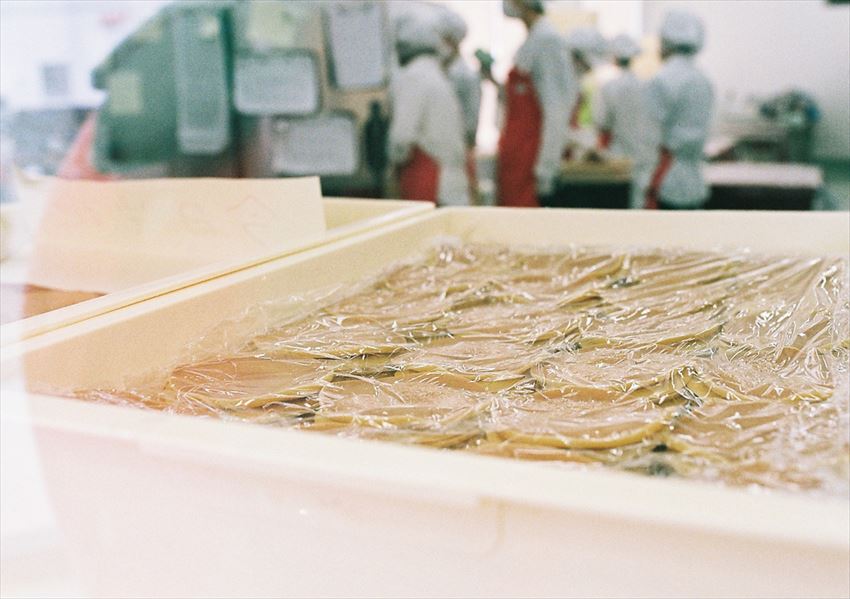
The kiji made in the morning.
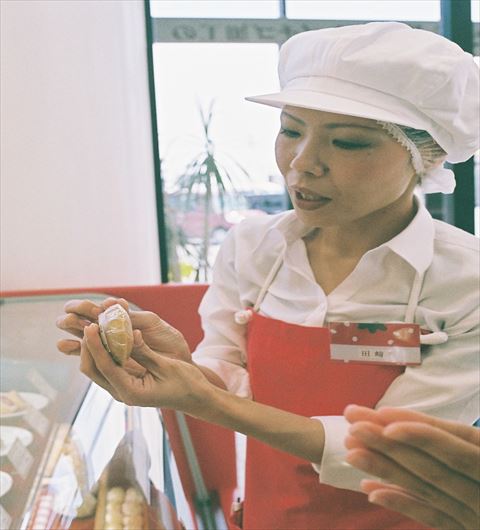
The store assistant explaining the different way in which the two pieces of kiji are wrapped.
Because the dorayaki is what is called a nama-gashi (fresh confection that contains a lot of water), it only lasts one day and must be refrigerated. As a result, the factory produces the kiji only in the morning. Because of this, we learnt from the store assistant that the best time to go (for visit) is during 11:00 and 11:30, when the kiji is still being made.
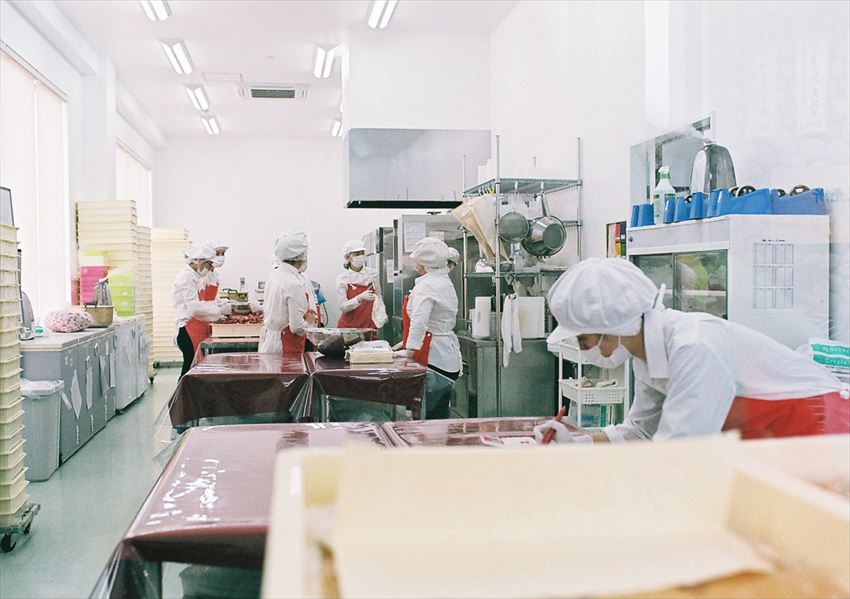
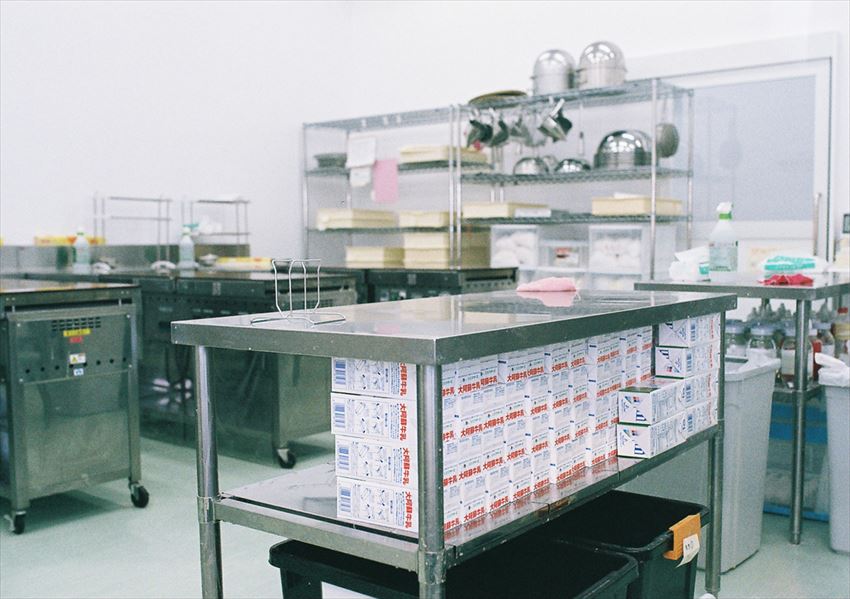
he small factory (the room in the lower picture is used to make the kiji, with the “hiranabe”).
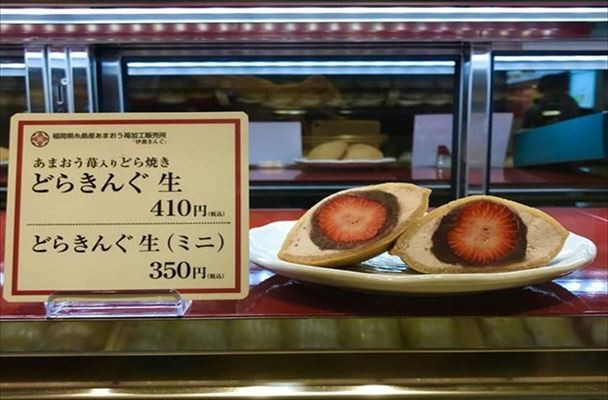
Comments